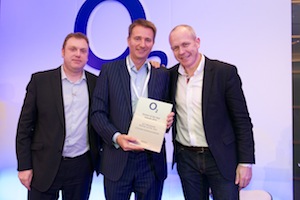Mitel has the answered the call for contact centres to provide more customer engagement options with the launch of its seventh-generation contact centre solution.
MiContact Center 7.0 includes mobile chat and self-service features as well as outbound capabilities designed to boost sales and drive lead generation.
"Finding easier ways for businesses to engage customers via their preferred media and devices is a top priority for contact centres, with a growing focus on mobile and self-service features," explained odd Simons, Director of Product Solutions, Mitel.
"MiContact Center not only delivers on this, but also integrates communication across all channels to deliver a single customer experience. For example, organisations can post contact options on their website along with estimated wait times, empowering customers to decide how they contact the business."
Swanson Health is among several companies already planning to expand its customer contact options with the latest version of MiContact Center. A natural health retailer offering high quality vitamins, supplements and natural health products online and via direct mail, Swanson Health manages a high volume of calls, emails and live chat sessions daily.
"At Swanson Health, we count on MiContact Center to track and analyse all our calls, emails and chats. We are looking forward to the new features in MiContact Center, which provides even more options for our customers to contact us, including mobile chat. Furthermore, it provides new features to help our business run more effectively," said Patti Westland, director of call centre for Swanson Health.
In addition to more contact options, MiContact Center now enables quicker and more immersive service by equipping agents with richer customer information collected from across all media channels. Support for mobile supervisors using real-time management applications can further streamline customer service.
The new release also includes MiContact Center Outbound portfolio, a feature-rich offering that introduces new preview and predictive dialing capabilities, as well as campaign and agent scripting capabilities. With MiContact Center Outbound, businesses can boost sales, drive lead generation, and keep agents busy with outbound interactions and campaigning capabilities while facilitating first-contact resolution and business process compliance through agent scripting functionality.
"Contact centres are about providing great customer service for inbound calls and also enabling engaging outbound calls that can really add to the bottom line. MiContact Center Outbound is designed to greatly improve the outbound experience with features that can improve agent productivity for more prompt, informed customer service," said Simons.
MiContact Center is one of three flagship product lines for Mitel, along with MiVoice and MiCollab.

 Herts-based 2 Circles Communications has retained its O2 JUC Wholesale Partner of the Year award for the third year in succession.
Herts-based 2 Circles Communications has retained its O2 JUC Wholesale Partner of the Year award for the third year in succession. Unify has swooped on Channel stalwart Jon Pritchard to head up its global channel programme. As Unify's Executive VP of Worldwide Channels the former President of Comstor Worldwide will be responsible for all indirect channel activities, from SMB markets to large scale alliance relationships. According to Pritchard, Unify (formerly Siemens Enterprise Communications) has a 'tremendous opportunity' to grow its channel business.
Unify has swooped on Channel stalwart Jon Pritchard to head up its global channel programme. As Unify's Executive VP of Worldwide Channels the former President of Comstor Worldwide will be responsible for all indirect channel activities, from SMB markets to large scale alliance relationships. According to Pritchard, Unify (formerly Siemens Enterprise Communications) has a 'tremendous opportunity' to grow its channel business.